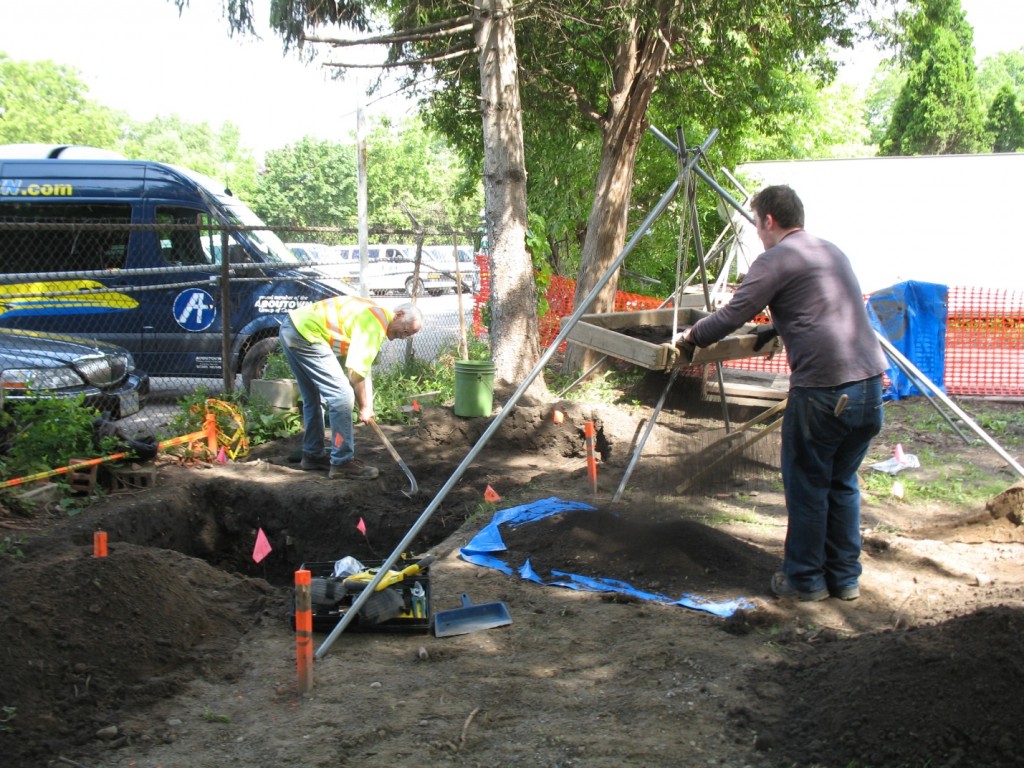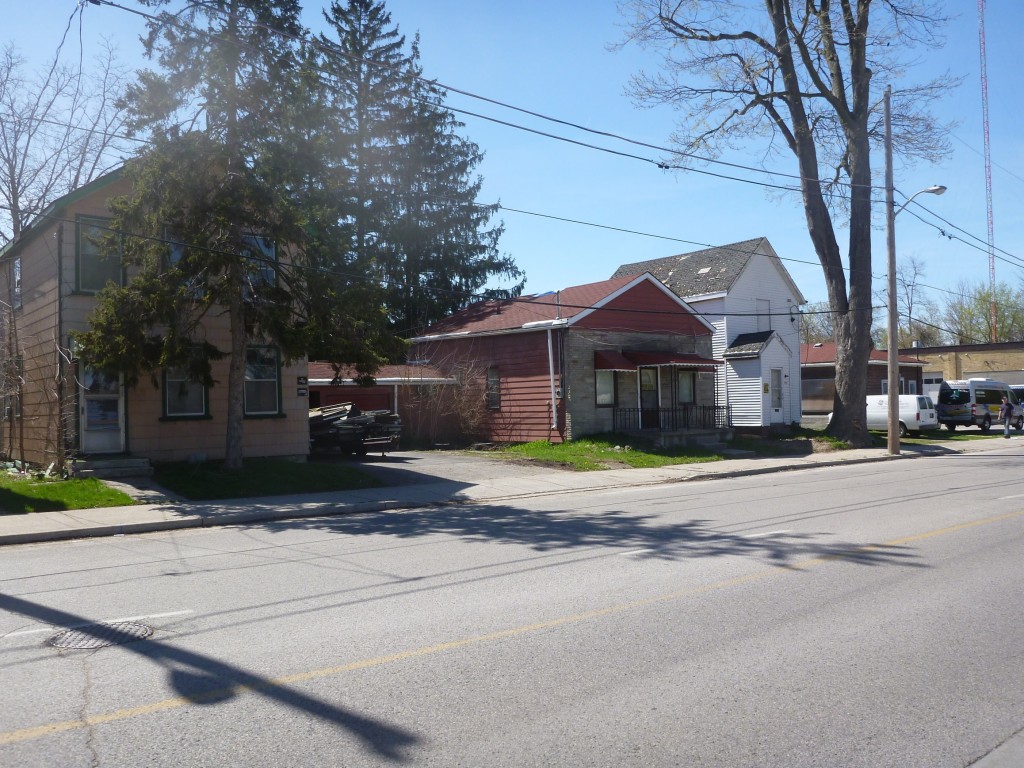Preserving Black Heritage in London, Ontario: The Fugitive Slave Chapel (1847-1869)
The plain, wood framed, vernacular style, residential cottage sitting upon the lot at 275 Thames Street, London, Ontario, was slated for demolition to make way for an expansion of the Aboutown Travel Services parking facilities. After the request for demolition was approved, groups of concerned and aware citizens began protesting and combating the order because they remembered the history associated with the structure; they remembered the building as the Fugitive Slave Chapel.
History of the Slave Chapel
The area surrounding London has an important, if often forgotten, association with 19th century Black heritage in North America. As one of the terminus points on the Underground Railroad, the population of former slaves was increasing during the early nineteenth century. As such, there are numerous points of local history, like Uncle Tom’s Cabin, near Dresden, as well as communities, like the former settlements of Wilberforce, near Lucan, and Buxton, near Chatham. The first African Methodist Episcopal (AME) Church (referred to as the Fugitive Slave Chapel) in London, Ontario was one of these focal points.
The AME Church was built in the area known as the Fork of the Thames in 1847 to service a settlement of Black refugees who lived on the south side of the Thames River. The AME Church purchased the lot through a board of trustees from William Clark, a carpenter who obtained the original deed for the lot. The church was renamed the British Methodist Episcopal Church in 1856 to reinforce its commitment to the British Crown. In 1869, a new church building was erected at 430 Grey Street, which is the location of the current Beth Emanuel Church, and the property containing the original AME Church was sold to James Seale. The church building at 275 Thames Street remained on the lot and became a residential property. It was long assumed that the original structure was demolished; however, E.J. Carty, a reporter for The London Advertiser (1864-1936), was able to confirm that the structure at 275 Thames Street was the original structure.
During its tenure at 275 Thames Street, the AME Church was visited by several notable people, including John Brown, who spoke to a delegation here advocating revolution and what would transpire as the raid on Harper’s Ferry. In 1986, the London Historic Sites Committee recognized the AME Church as a site of historic and cultural importance in London, and erected a plaque on the building.
Public Excavations
The public outcry concerning the demolition of the building was enough to get a 60 day stay of demolition to properly document the cultural and archaeological heritage of the property. In this time, Timmins Martelle Heritage Consultants Inc. (TMHC) offered its services to conduct the archaeological assessments. While the City of London financed some portions of the archaeological assessment, much of the personnel, time, and resources was supplied by TMHC, volunteers from the Ontario Archaeological Society and the general public, who helped to make this project a success.
The excavations were conducted during weekends and included mapping the property, the excavation of test pits, the excavation of one-meter units, and the mapping and excavation of identified features. Given the time constraints placed on the project by the imminent demolition, the outpouring of public volunteers formed the backbone of this project and helped complete our archaeological assessment before the deadline.
A total of 41 units were excavated in the roughly 20 meters by 15 meters area behind the standing structures. The archaeological work uncovered a variety of domestic artifacts that included ceramics, glassware, iron objects, and modern refuse. The majority of the artifacts examined to date have been associated with the later 19th/early 20th century habitation of the site. A total of eight potential cultural features were identified and excavated; one of which may have been a grey water pit and the rest were likely small refuse pits.
What's next?
At the time of writing, the majority of fieldwork has been completed and volunteers have completed the processing of artifacts, with cataloging and analysis to follow. There are plans to conduct additional mechanical topsoil stripping behind the house to look for additional features. During the investigation process, the demolition plans for the building were put on hold to allow for the potential relocation of the structure to a new home.
The Fugitive Slave Chapel Preservation Project organizers are presently trying to raise funds (approximately $160,000) to relocate the Fugitive Slave Chapel structure to an empty lot adjacent to the Beth Emanuel Church on Grey Street. Once relocated, the Fugitive Slave Chapel will require at least $500,000 to renovate and repurpose it as a community center that will offer meals, counseling, and educational programs, as well as being a museum and focal point of Black history in London. Until now the Fugitive Slave Chapel Preservation Project has had moderate successes at raising the initial relocation funds from public donations through efforts such as their ‘2¢ Worth’ campaign; however, they will continue to require further donations to make their vision to preserve the Fugitive Slave Chapel a success. The revitalized role of Fugitive Slave Chapel continues to have tremendous potential to be a focal point of Black heritage in the area, as well as serving members of the London community in need.
This project helped emphasize the importance of archaeology to help communities remember, as well as the role we have in helping preserve, forgotten pasts; however, this was not a one-sided relationship. The public played a vital role in the implementation, excavation, and conservation of this project and it would not have been possible without their interest and support. While this project was not without its difficulties, as with any project, it shows that CRM archaeology and public engagement can work together to conduct archaeology that is significant to local communities.
2022 Update - Possible Future at Fanshawe Pioneer Village
The London & Middlesex Heritage Museum, which operates Fanshawe Pioneer Village was offered the gift of a building known as the Fugitive Slave Chapel by its owners – the British Methodist Episcopal Church. Constructed in c.1848 by the African Methodist Episcopal Church, the Chapel served the early Black community as a place of gathering and worship until 1869 - including many who fled their enslavement through the Underground Railroad to Canada.
The Fugitive Slave Chapel is likely the oldest surviving building that speaks to London’s Black history. This project will relocate the Fugitive Slave Chapel to Fanshawe Pioneer Village, where it will be fully restored and historically preserved to ensure this important piece of local Black history isn’t lost, and that the historic truth that shaped our City and nation’s narrative is shared.
Together with dedicated group of community partners, the London & Middlesex Heritage Museum is working to relocate, and restore the Fugitive Slave Chapel building at Fanshawe Pioneer Village.
“The history that is associated with The Fugitive Slave Chapel involves our ancestors’ passage through the Underground Railroad to Freedom. It is important for members of the Black Community, in London, to see historical buildings that tell "Our Story”. lt is even more important for the community at large to become more informed of the role London played in the Freedom of Black slaves” - Nikisha Evans, President of the Congress of Black Women of Canada, London Chapter.
“The History and preservation of the Fugitive Slave Chapel, is not only important to London’s Black history, but also to Canadian History. Let us never forget that as one of the terminus points on the Underground Railroad, the population of former slaves increased during the nineteenth century and many found this a place of safe gathering and worship. The preservation of this important building at Fanshawe Pioneer Village will ensure it is respected and honoured by those who come after us, and offers education to future generations about the journey of fugitive slaves who found refuge in it,” - Harold Usher, former City Councillor, and member of London’s Black community.
The addition of the Chapel building to the Village aligns well with the Museum’s mission to connect communities by remembering, sharing and celebrating local histories, and also helps include more voices in the story it shares.
As it stands, the building is at risk of further deterioration. If we do not act now, a key piece of the London area’s Black History could be lost. The fundraising goal to support the relocation and restoration of the Fugitive Slave Chapel at Fanshawe Pioneer Village is $300,000, and $85,000 has been confirmed in funding as of early March 2022. With support of donors like you, we can make it happen - the Time is NOW.
Donate TODAY: The Chapel Project — London Community Foundation (lcf.on.ca)



